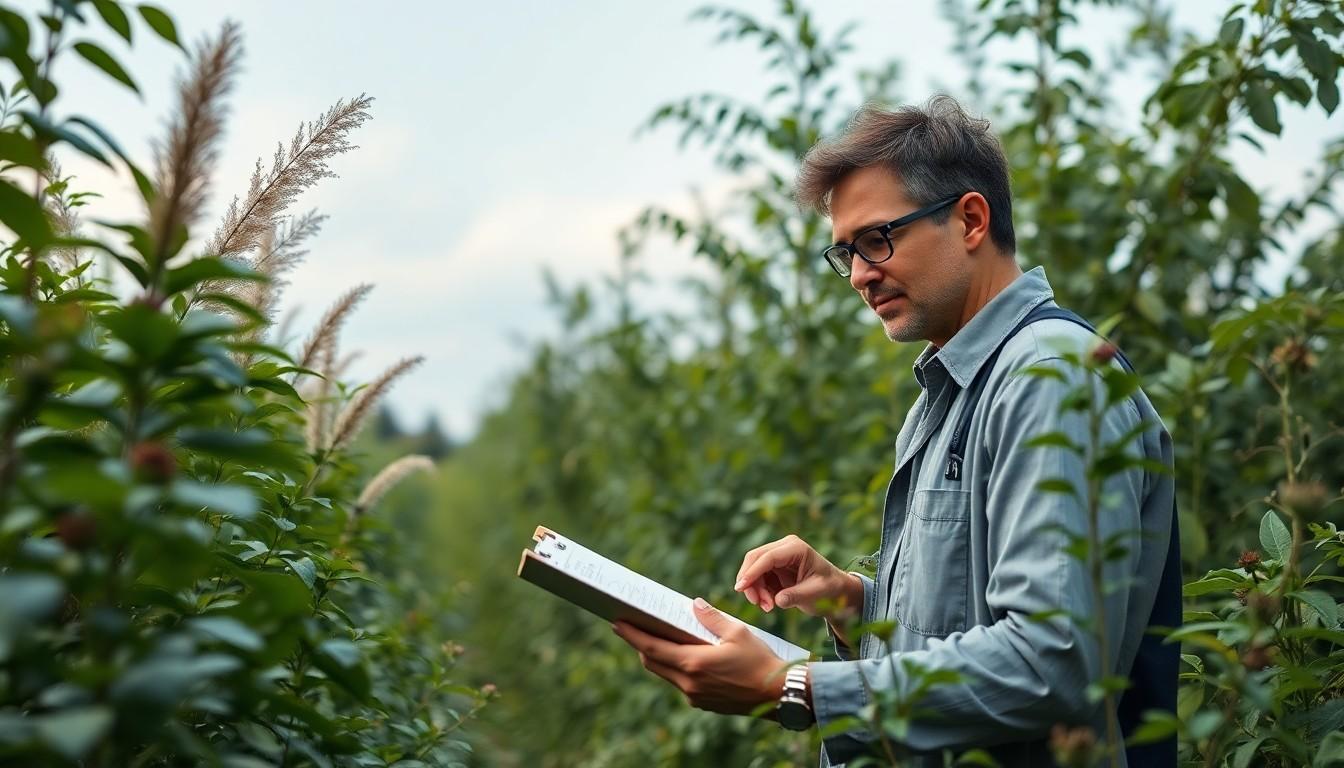In the grand theater of ecosystems, plants are the unsung heroes, tirelessly converting sunlight into energy. But how do scientists measure this leafy magic? Enter the gross primary productivity equation, the not-so-secret formula that reveals just how much carbon dioxide plants gobble up during photosynthesis. It’s like a calorie count for the plant kingdom, and trust us, it’s more exciting than it sounds.
Gross Primary Productivity Equation
Gross primary productivity (GPP) quantifies the total amount of organic material produced by photosynthetic organisms in a specific area over a given time frame. It reflects how efficiently plants convert carbon dioxide and sunlight into biomass. Scientists use GPP to assess ecosystem health and productivity, as this metric provides valuable insights into carbon cycling.
The GPP equation is defined as:
[ GPP = NPP + R ]
Where NPP represents net primary productivity and R indicates the rate of respiration by plants. By understanding these components, researchers gauge the balance between energy captured and energy used by plants for growth and survival.
In various ecosystems like forests, grasslands, and aquatic environments, GPP varies significantly. Tropical rainforests typically exhibit the highest GPP, driven by abundant sunlight and moisture. Conversely, deserts demonstrate low GPP due to limited precipitation and harsher conditions.
Methods to measure GPP include remote sensing technologies and field-based observations. Remote sensing utilizes satellite images to estimate vegetation cover and photosynthetic activity. Field measurements often involve assessing biomass accumulation over time.
Gross primary productivity holds essential implications for climate change studies. Increases in GPP contribute to carbon sequestration, while declines can indicate ecosystem stress or degradation. Understanding GPP fosters improved ecosystem management, conservation strategies, and climate policies, addressing ecological challenges effectively.
Importance of the Gross Primary Productivity Equation
The gross primary productivity equation plays a vital role in understanding ecological systems. It serves as a key tool for scientists studying energy flow and biomass production within various ecosystems.
Role in Ecosystem Studies
Scientists often rely on GPP to assess the overall health and productivity of ecosystems. Ecosystem productivity can indicate the balance of energy flow through food webs. Data gathered from GPP measurements enables researchers to compare productivity across different habitats, such as forests, grasslands, and aquatic systems. This equation also informs conservation efforts by identifying areas with high productivity and those at risk. Analyzing GPP trends allows for effective monitoring of environmental changes and their impacts on biodiversity.
Impacts on Carbon Cycle
The GPP equation significantly influences our understanding of the carbon cycle. By quantifying the carbon dioxide absorbed during photosynthesis, GPP provides insights into overall carbon storage within ecosystems. High GPP values suggest greater carbon sequestration, which helps mitigate climate change impacts. Ecosystems with lower GPP may indicate stress, leading to carbon release back into the atmosphere. Scientists track changes in GPP to predict potential shifts in carbon dynamics, guiding climate policies and sustainability practices. Understanding these relationships strengthens efforts to maintain ecological stability and combat global warming.
Components of the Gross Primary Productivity Equation
The gross primary productivity equation includes various components that play significant roles in plant growth and ecosystem functioning. Understanding these components clarifies how GPP manifests in different environments.
Photosynthesis Rates
Photosynthesis rates directly influence GPP measurements. This process occurs when plants convert sunlight, carbon dioxide, and water into glucose and oxygen. Higher rates of photosynthesis lead to increased organic material produced in a given area. In favorable conditions, such as ample sunlight and adequate water supply, the rates soar, boosting GPP. For example, tropical rainforests experience some of the highest photosynthesis rates globally, resulting in elevated levels of biomass production. Conversely, limited sunlight or suboptimal temperatures can lower the photosynthesis rates and consequently reduce GPP.
Environmental Factors
Environmental factors significantly affect GPP levels across ecosystems. Temperature, light availability, and moisture levels create varying conditions that impact plant growth. Warmer temperatures often enhance plant metabolic processes, leading to higher GPP. Light intensity also plays a critical role, as plants require sufficient light for photosynthesis. Additionally, moisture availability directly correlates with GPP; ecosystems with abundant rainfall generally exhibit higher productivity. For instance, deserts experience lower GPP due to limited precipitation and unfavorable temperatures, while wetlands thrive with elevated productivity levels. Understanding these factors helps researchers evaluate ecosystem performance effectively.
Applications of Gross Primary Productivity Equation
Gross primary productivity plays a vital role in various fields, including climate change research and agricultural assessments. Each application reveals insights into ecosystem dynamics and productivity.
Climate Change Research
In climate change research, GPP serves as a critical metric. It quantifies the amount of carbon dioxide absorbed by plants, providing essential data on carbon sequestration. High GPP values indicate robust carbon capture, helping scientists track progress in mitigating climate change. Variations in GPP can signal ecosystem stress or resilience amidst changing climates. This information aids in modeling future climatic scenarios and assessing potential impacts on biodiversity.
Agricultural Assessments
GPP also offers significant insights for agricultural assessments. By measuring productivity rates, farmers can optimize crop yields and enhance land management practices. High GPP values often correlate with increased biomass production in crops, informing decisions on irrigation and fertilization. Understanding GPP allows for better predictions of agricultural productivity under various environmental conditions. Effective use of GPP data can support sustainable farming practices and resource allocation, ultimately improving food security.
Gross Primary Productivity
Understanding gross primary productivity is essential for grasping the dynamics of ecosystems. The GPP equation provides a valuable framework for measuring how effectively plants convert sunlight and carbon dioxide into biomass. Variations in GPP across different environments reveal important insights about ecosystem health and resilience.
The implications of GPP extend beyond ecology, influencing climate change research and agricultural practices. By tracking GPP, scientists can assess carbon sequestration and ecosystem stress, guiding conservation efforts and sustainable land management. Ultimately, a deeper understanding of GPP fosters informed decisions that support ecological stability and address the challenges posed by a changing climate.

